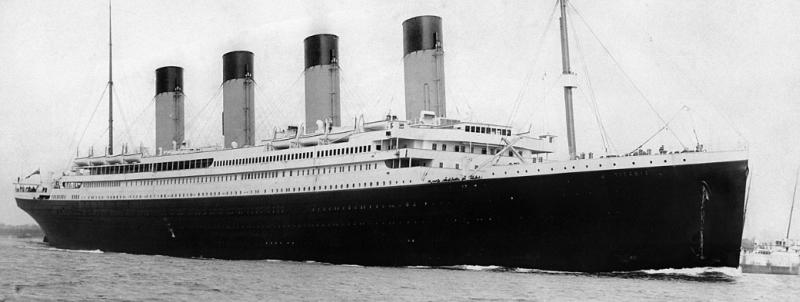 One hundred and thirteen years ago this week, the RMS Titanic slipped below the icy waters of the North Atlantic after striking an iceberg. Close to 1,500 passengers and crew were lost, making the sinking the deadliest peacetime sinking of a passenger liner in history.
One hundred and thirteen years ago this week, the RMS Titanic slipped below the icy waters of the North Atlantic after striking an iceberg. Close to 1,500 passengers and crew were lost, making the sinking the deadliest peacetime sinking of a passenger liner in history.
The Titanic had sailed from Southampton, UK five days earlier on April 10th. Coincidentally, 51 years later, on April 10, 1963, the nuclear attack submarine USS Thresher sank during deep-diving tests, killing all 129 crew and shipyard personnel aboard. Also coincidentally, the Thresher sank relatively close to the wreck of the Titanic, although when the submarine sank, no one knew quite how close. An updated repost.
The Thresher was not the only submarine wreck in the general vicinity. The 1960s were difficult years for the American submarine service. Five years after the loss of the Thresher, in May 1968, the Skipjack-class nuclear-powered submarine, USS Scorpion, was lost with her entire 99-person crew, roughly 1,600 miles from where the Thresher sank. The wreck of the Titanic was believed to lay between the known positions of the wrecks of the two American submarines, but no one knew exactly where.
Oceanographer Robert Ballard wanted to locate the legendary passenger liner. He met with the Navy in 1982 to request funding to develop the robotic submersible technology he needed to find the Titanic.
The Navy wasn’t interested in the Titanic, but it wanted to survey the Scorpion and Thresher wrecks to determine if the reactors were leaking radiation into the sea. They agreed to allow Ballard to search for the Titanic for a short period once he had completed the primary mission of surveying the submarine wreckage. Indeed, the search for the Titanic became the cover story for the otherwise top-secret mission.
“I suggested that because the Titanic was between the Thresher and Scorpion, maybe tell the world I am looking for the Titanic,” Ballard said.
In 1985 a Franco-American expedition led by Jean-Louis Michel and Robert Ballard surveyed the wreckage of both submarines and determined that the reactors were intact. With only 12 more days available to search, Ballard located first the debris field and then the wreck of the RMS Titanic.
“The Navy never expected me to find the Titanic, and so when that happened, they got really nervous because of the publicity,” Ballard said.
“But people were so focused on the legend of the Titanic they never connected the dots.”
The true nature of the expedition that discovered the Titanic would remain a secret for over two decades.
One legacy of the Thresher tragedy is the Navy’s SUBSAFE program.
In June 1963, in the aftermath of the loss of Thresher while investigations, design reviews and testimony to congress were in progress, the SUBSAFE Program was created. The purpose of the SUBSAFE Program is to provide maximum reasonable assurance of watertight integrity and recovery capability of a submarine. The annual training requirement includes a review of past failures including the loss of Thresher.
Since SUBSAFE began in 1963, only one submarine, the non-SUBSAFE-certified USS Scorpion (SSN-589), has been lost.
In 2020, the Navy began releasing documents from the investigation into the Thresher.

” The purpose of the SUBSAFE Program is to provide maximum reasonable assurance of watertight integrity and recovery capability of a submarine. ”
Why does it take the deaths of dedicated submariners to achieve this. Senior personnel and designers should be forced to take part in trials. That would focus the minds.
“Senior personnel and designers should be forced to take part in trials. That would focus the minds.”
I don’t disagree. Nevertheless, senior personnel and designers were involved. Admiral Rickover had been on the Thresher during its initial sea trials. Also 16 shipyard engineers were among the 129 who died on the Thresher.
And Harry Turtledove wrote a fictional version of Project Azorean, in which the deception has an extra level. “3 Miles Down” which I finished on a research ship a couple of days before we went into Alameda and the boat went into MLB1, now just a floating drydock.